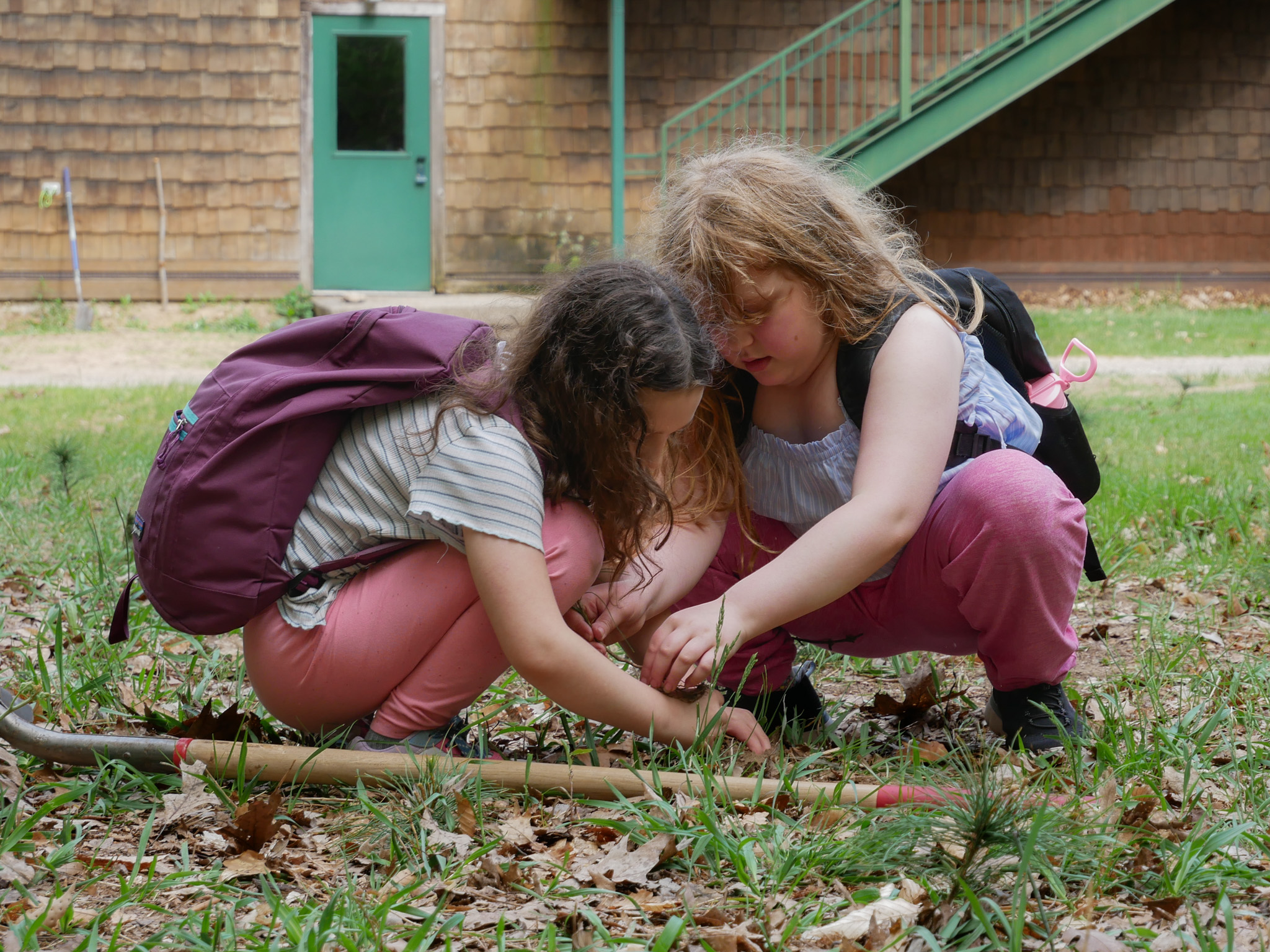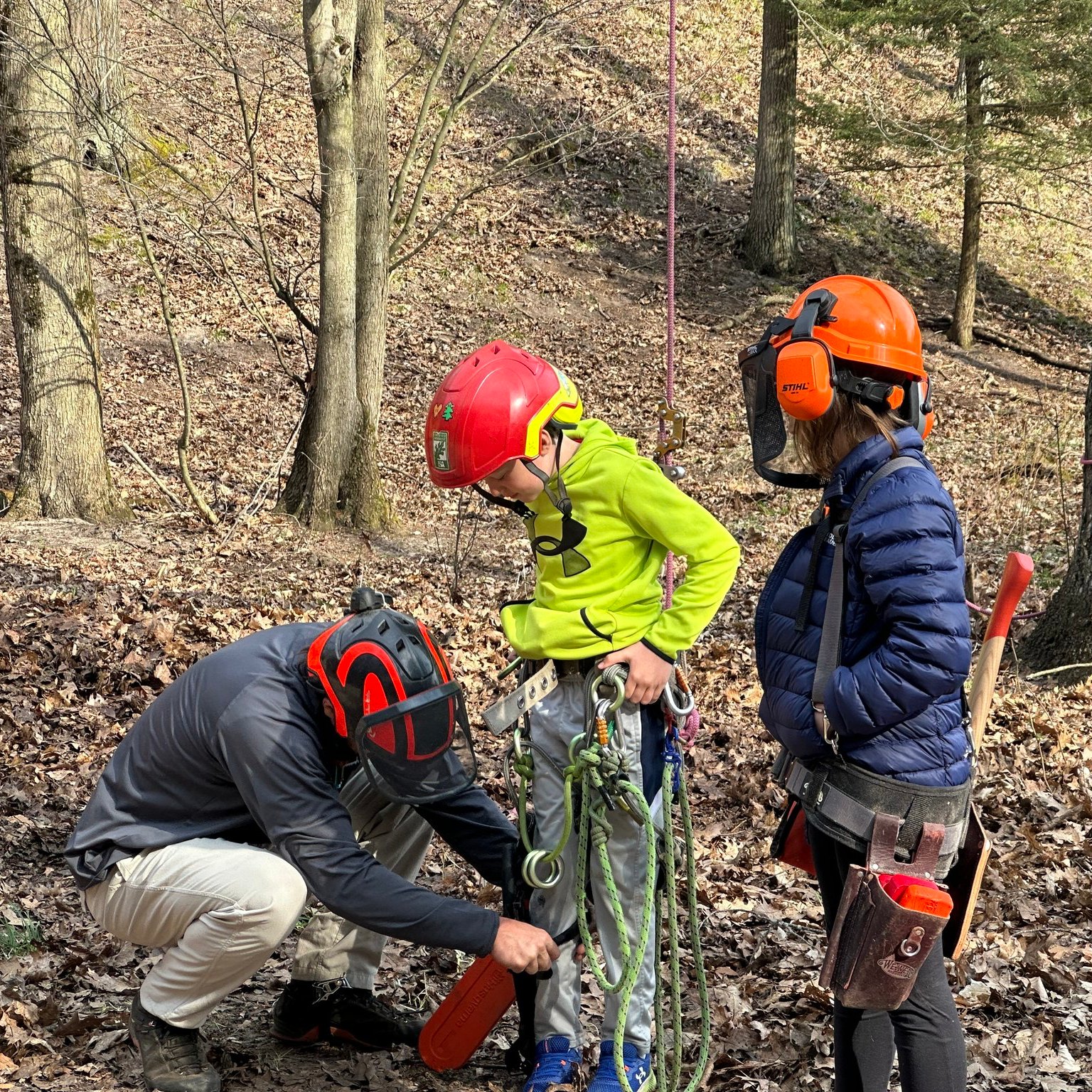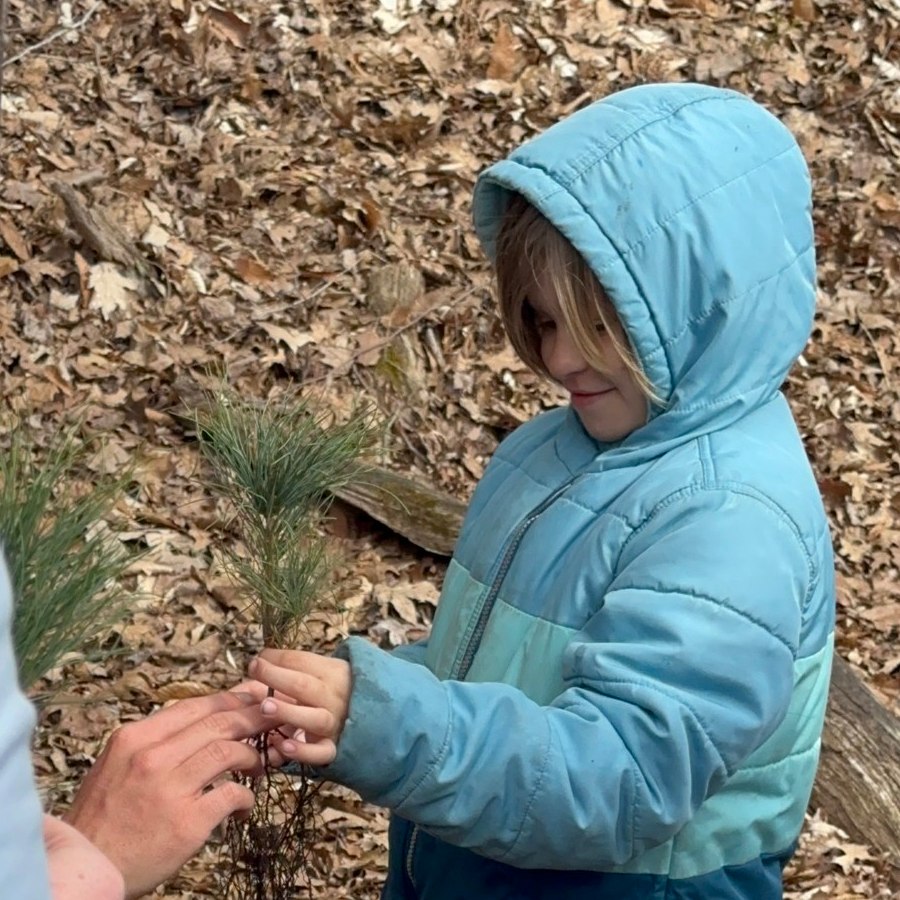Eager third-graders kicked off an impressive arboreal mission in April when they helped launch The Tree Lab at Miniwanca. Nearly 100 students from Shelby Elementary began the process of planting 20,000 white pine trees on site.
The pine trees replace native hemlock trees, which are under threat from an invasive insect, the hemlock woolly adelgid. The insect’s wool-like egg sacks invade hemlock’s needles, and without treatment, infested trees die within four to 10 years.
“These hemlocks are vital to dune preservation and ecology,” said Griffin Vogler, Executive Director of Miniwanca. “The new white pines will replace that crucial resource, restoring the forest’s health, improving water quality, stabilizing dunes, and protecting wildlife habitat.”

This partnership with The Tree Lab is over a year in the making and supported by Oceana Conservation District and Great Lakes Restoration Initiative. The American Youth Foundation also committed $50,000 to the project to remove the dead and dying hemlocks.
The Tree Lab’s work is two-fold: environmental preservation and teaching Oceana County students through hands-on STEM learning and real-world conservation efforts.
“Our project is to get students from Oceana County out to this place so that they can learn about all the different aspects that go into a large-scale reforestation project,” said Nathan Ayers.

The students are divided among four stations: a nursery school, where they learn how to grow new trees from cuttings; timber tech, where they learn about tree climbing and arboriculture; and agroforestry design, where they learn to fly drones and large-scale reforestation.
“We end with everybody planting a tree of their own, so it’s full circle where students get to engage with this place and this project and leave feeling part of the community, feeling good about getting engaged solving this problem,” Ayers said.
The Tree Lab wrapped its work at Miniwanca with Oceana County students June 1. “Together, we empowered the next generation to protect Oceana County forests and build a more resilient, greener future,” said Vogler.


